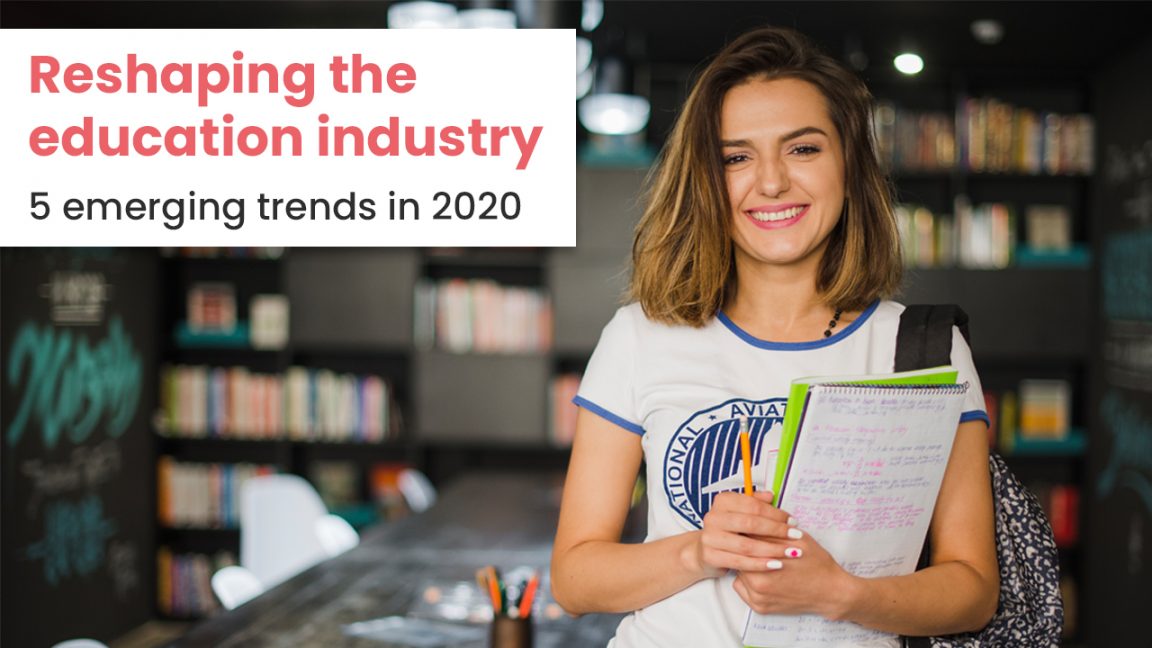The education and job sectors are changing rapidly every day. With digital learning and global opportunities, education is becoming more flexible. The works which were regarded as part-time hobbies are now blooming in the world of digitalization. Be it the current young generation or the upcoming generation; the technological advancement has made everyone tech-savvy. Students perceive the world of knowledge with technology and innovations. We have shortlisted the top five emerging technology trends that have the power to make a revolutionary change in the education system in 2020 and the upcoming year.
Artificial Intelligence
Artificial intelligence is regarded as one of the most booming fields to help students with academics. AI is helmed in the first world countries for project-based learning, vocational learning as well as for enhancing entrepreneurial skills. At the same time, Artificial Intelligence is beneficial for both the education system and educators. It is known as the assistant of modern-day educators. As online courses are getting popular, grading consumes a lot of time. The usage of AI helps in calculating the grades automatically by AI bots. Thus, working pressure becomes a lot less stressful for educators. So, they can focus more on teaching and guiding the students. AI is beneficial in analyzing students’ activity, academic performance and the effectiveness of various learning programmes as well.
Data Analytics in academics
The importance of data analytics is growing not only in the professional working field but also in the educational area. Data analytics is an excellent tech tool to evaluate data about the students from various sources, ranging from the application form to mark sheets to prepare to personalize educational plans for them. It is essential to know the background of a student to guide him towards a career-oriented goal. Data analytics is mapping and measuring the progress of the students in academics and extracurricular fields. In this way, the educators can know the key problematic areas of each student, and they can work together for betterment.
Augmented Reality (VR) and Virtual Reality (VR)
Who doesn’t like to learn American Civil War from a video over a 5-page long chapter? AR is getting popular among schools for bringing pictures and imaginations to experience. AR works as an interactive experience that works with digital elements and produces live, three-dimensional views. It is used to add life to the abstract concept, which is an encouraging learning process for students. VR is more captivating than AR in terms of visual experience. VR tools such as Google Expedition make it possible for them to visit places around the world with the VR goggles.
Internet of Things (IoT)
As of now, IoT is not a well-known technology. But the use of this technological know-how in training can be priceless. IoT is bundled with digital mastering, and AI can assist it in constructing a large neighborhood of college students who work in collaboration to create something new. IoT promises a greater collaborative future for education; it brings students from different corners around the globe together to get the solution of complex issues. At the same time, it also helps ease the academic works, which may seem human intervention. That work can be done by the supplement device provided by IoT and teachers can invest the excess time in educational development.
App-based learning
App-based learning has already paved its way to the educational field for its ease and access. There are a few learning apps available, which is making it easy for the students to get any information at any time. So, students can get flexible with their study time. Not every student takes the same amount of time and attention to learn a matter. Besides, these learning apps are always thriving for innovative ways to make their content more creative and fun to learn. There are many educational activities as well, which can engage the students in an interactive learning process.







Comments
0 comments